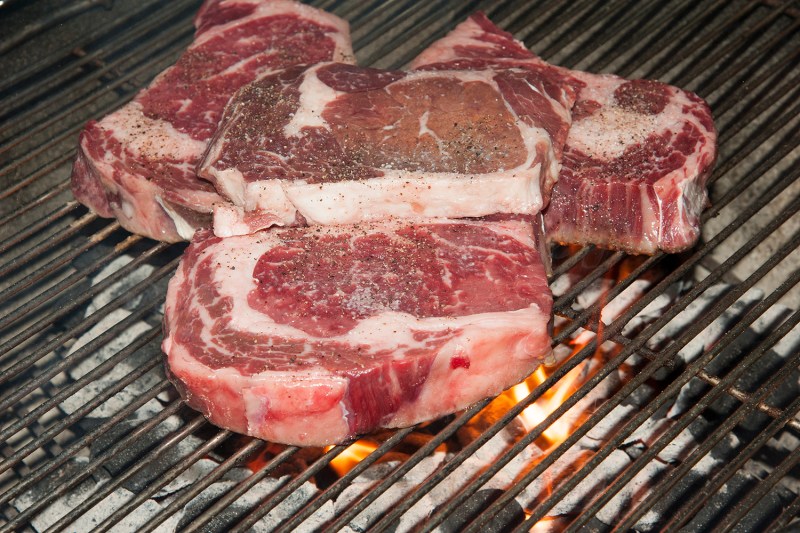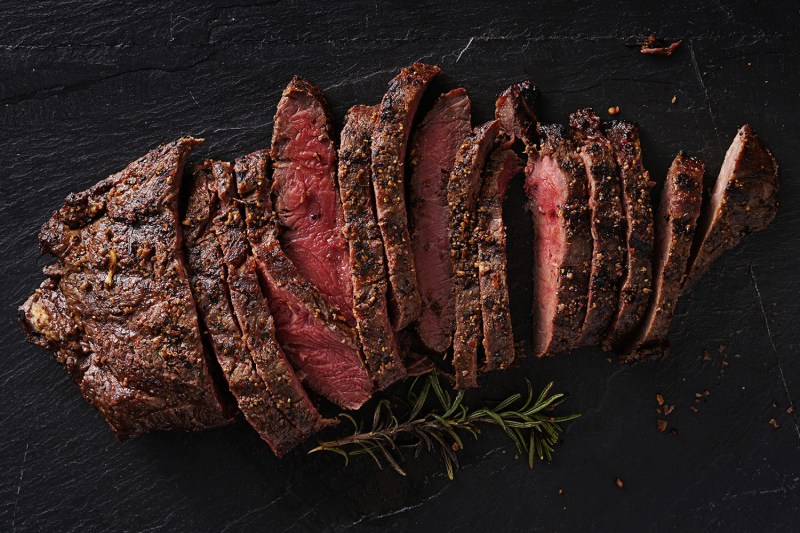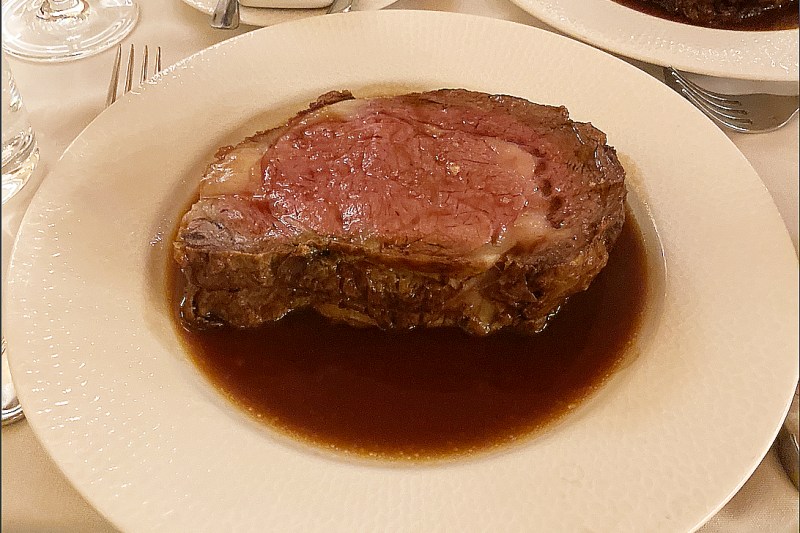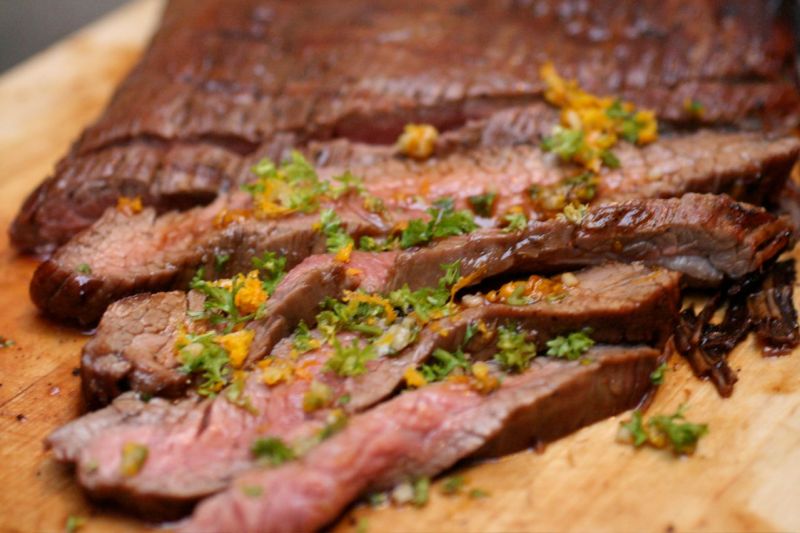There are multiple cuts of steak out there, and it’s hard to choose if you don’t really know one from the other. Why you want a specific cut might depend on how you want to cook it, your budget, or just sheer familiarity.
Sometimes, the local butcher or grocery store doesn’t have the one you want, and other times, one cut would be better to use for a particular dish. I personally fell in love with the ribeye and the sirloin, but I haven’t always had access to one or the other. In those situations, you have to get what you can get if you’re really craving a steak, so it’s good to know the best steak cuts out there and how to get the most flavor out of each.
Perhaps you’re new to grilling the perfect steak, and picking out a cut of beef gives you anxiety. Don’t worry — that’s normal. With this guide, you’ll be able to rest easy knowing that you’re not wasting your money on a cut of steak that you don’t know how to work with.
Below, you’ll find a list of the best cuts of steak that you can’t go wrong with, and some tips for cooking them. So grab your favorite beer, fire up that grill, and get cooking.
- Rib-eye
- Filet mignon
- New York strip
- Porterhouse
- Flat iron
- Prime rib
- Sirloin
- Flank
- Chuck eye
- Round
Rib-eye

The king of flavor
The ribeye needs little to no introduction. It’s at the top of many people’s list when it comes to their preferred cut, as experts such as Gordon Ramsay say its taste and tenderness are second to none.
With the ribeye, you get way more bang for your buck. It’s a sizable piece of meat infused with little flavor pockets of fat (marbling) that melt into the meat as it’s cooking and kind of self-bastes. It’s going to be more greasy than a tenderloin cut, but that’s where you get that unmistakable beef flavor. Ribeyes are wonderful to cook over direct high heat, or if they’re thick enough, like a cowboy cut, try the reverse sear cooking method.
Filet mignon

The godfather of steaks
If rib-eye is king, then filet mignon is the godfather. It’s one of the priciest pieces of beef you can buy because it comes from the very tip of the tenderloin. It’s the most tender meat on the cow, and each one only produces a few cuts. It’s almost completely devoid of fat, sinew, and tendon, which gives it that soft, buttery texture.
The great thing about filet mignon is that it can be cooked in various ways and will always taste amazing. That is, if you don’t overcook it. It should be a crime to serve filet any more done than medium rare, but it happens.
We recommend using a combination of direct and indirect heat when grilling a filet mignon. You can sear it over high heat then move it to low heat to finish. Or you can try incorporating a sous vide reverse sear method.
New York strip

Your steakhouse go-to
If you want to go a slightly cheaper route than a rib-eye yet get a steak with excellent flavor, you can’t go wrong with a strip steak. It comes from the same section of the cow as the filet (the loin) but has more fat and is denser. If you’re put off by bloody meat, this is a great steak to serve medium to well-done, though it still tastes excellent rare. New York strips cook up well on a grill or high-grade cast-iron skillets by starting with a heavy sear, then letting it finish at lower heat in the oven.
Porterhouse

The best of both worlds
If you’re thinking of purchasing a T-bone steak, why not get the beefed-up version for a few more bucks? Porterhouse steaks are bone-in cuts that include part of the loin (New York strip) and tenderloin (filet mignon), divided by the bone. Porterhouse steaks are cut higher up the cow’s loin section, hence why you have more tenderloin portion than a T-bone. However, to be classified as a porterhouse, it has to be 1.25 inches thick, at least. So if you see your local market trying to pass off thin porterhouse steaks to make an extra buck, take a pass and head to a reputable butcher.
The porterhouse will let you experience the buttery tenderness of the filet mignon and the rich flavor of the New York strip in full. The best way to grill up these monsters is the same way as most. Start with a heavy sear on high heat then finish on lower, indirect heat.
Flat iron

The sleeper
The flat iron, or top blade, steak is an affordable and diverse cut. You can eat a flat iron right off the grill or use it for kabobs, stir-fries, or fajitas. It’s great marinated or with some simple seasonings.
The thing with flat iron steaks is that you have to be careful not to cook them too quickly. You can serve flat iron steak well done, but it will be as tough as shoe leather if you cook it too fast. Searing both sides heavily for two to three minutes on each side, then moving to indirect heat to finish is crucial. If you’re using a cast iron, move it to a cool sheet tray or pan before finishing in the oven at around 350 to 400 degrees. If you’re on a grill, sear over direct heat, then move to the grill’s cooler side to finish.
Prime rib

The steak for special occasions
Buffet-style meal service has gone the way of the dodo. But, we can all remember the meat carver who always sliced the prime rib too thin for our liking when we went to the fancy buffet with grandma. Prime rib is a cut of beef often reserved for holidays, weddings, or other events that call for feeding a large group.
Think of the prime rib as multiple rib-eyes combined into one, roasted for hours to heavenly, fat-rendered perfection. The traditional way of cooking a prime rib is in the oven after searing the outside. However, if you want to take the flavor up a notch, we suggest using your smoker or high-quality pellet grill.
Sirloin

The chicken dinner of steaks
Sirloin steak is kind of the also-ran steak in some ways. That tasty and, well, tender tenderloin runs right between the sirloin regions, which are sirloin, top sirloin, and bottom sirloin. Sadly, sirloin isn’t quite as tender as tenderloin, but dammit, a sirloin is pretty tender, often retails for less than $8 a pound, and can be sliced up for delicious sandwiches, used in savory stews, or enjoyed as an entree. In fact, in many mid- to lower-range steakhouses, if you order a steak that’s around $12 to $15 with potato and side included, you’re going to get sirloin, and you’re probably going to be cool with it.
Sirloins don’t typically come super thick, so cooking them is pretty simple. You can cook these bad boys over medium-high direct heat for two to four minutes per side, depending on your desired level of doneness.
Flank steak

The late bloomer
Flank steak is only just now starting to get the appreciation it deserves. For years, this gorgeous cut of beef flew under the radar because of its leanness and heavily worked texture. Usually, a lack of fat means both a lack of flavor and a lack of tenderness. However, the flank, when done correctly, can be beautifully succulent and flavorful. The trick is to cook flank steak quickly over high heat. It’s delicious when grilled or simply cooked quickly in a screaming hot cast-iron pan.
Flank steak is also an incredibly versatile cut of beef. Sure, you can serve it on its own next to some potatoes and call it dinner. That’s a great option, and one we do often. But flank steak is also wonderful as the star of a steak salad, in fajitas, and stir-fries. Mix it up.
Chuck eye steak

The budget rib-eye
If you’re craving rib-eye flavor but your wallet says otherwise, the chuck eye steak is an excellent alternative. Sometimes called the “poor man’s rib-eye,” this underrated cut comes from the chuck primal — right next to where rib-eye steaks are cut. What does that mean for you? It means you end up getting similar marbling and tenderness at a fraction of the price.
The chuck eye steak gives you the best of both worlds in terms of price, texture, and flavor. It may have a little more connective tissue compared to the rib-eye, but that actually works in your favor if you cook it right. For tender results, keep it simple: Season it to your heart’s content with salt, pepper, and maybe garlic powder, then give it a good sear over high heat. Searing for 2 to 3 minutes per side on a hot grill or cast-iron pan should create that sought-after crust. After that, turn the heat down or move it to indirect heat until it hits medium-rare or medium doneness.
Round

Hidden gem
Round steak doesn’t always get the love it deserves, but if you know how to treat it right, it can be a delicious, budget-friendly cut. You get it from the rear leg of the cow, so round steak is lean, slightly tough, and low in marbling; that means it needs a little extra care to bring out its best qualities. It’s not the first thing people flock to, since it’s not naturally tender. Still, you can get some delicious flavor from this cut.
Slow cooking and marinating work wonders. Braising is one of the best methods — searing the steak first, then simmering it low and slow in broth, wine, or a rich tomato sauce until fork-tender. It’s also great when cut into thin slices for stir-fries or used in dishes like Swiss steak, where it’s simmered with onions and tomatoes for deep flavor.




